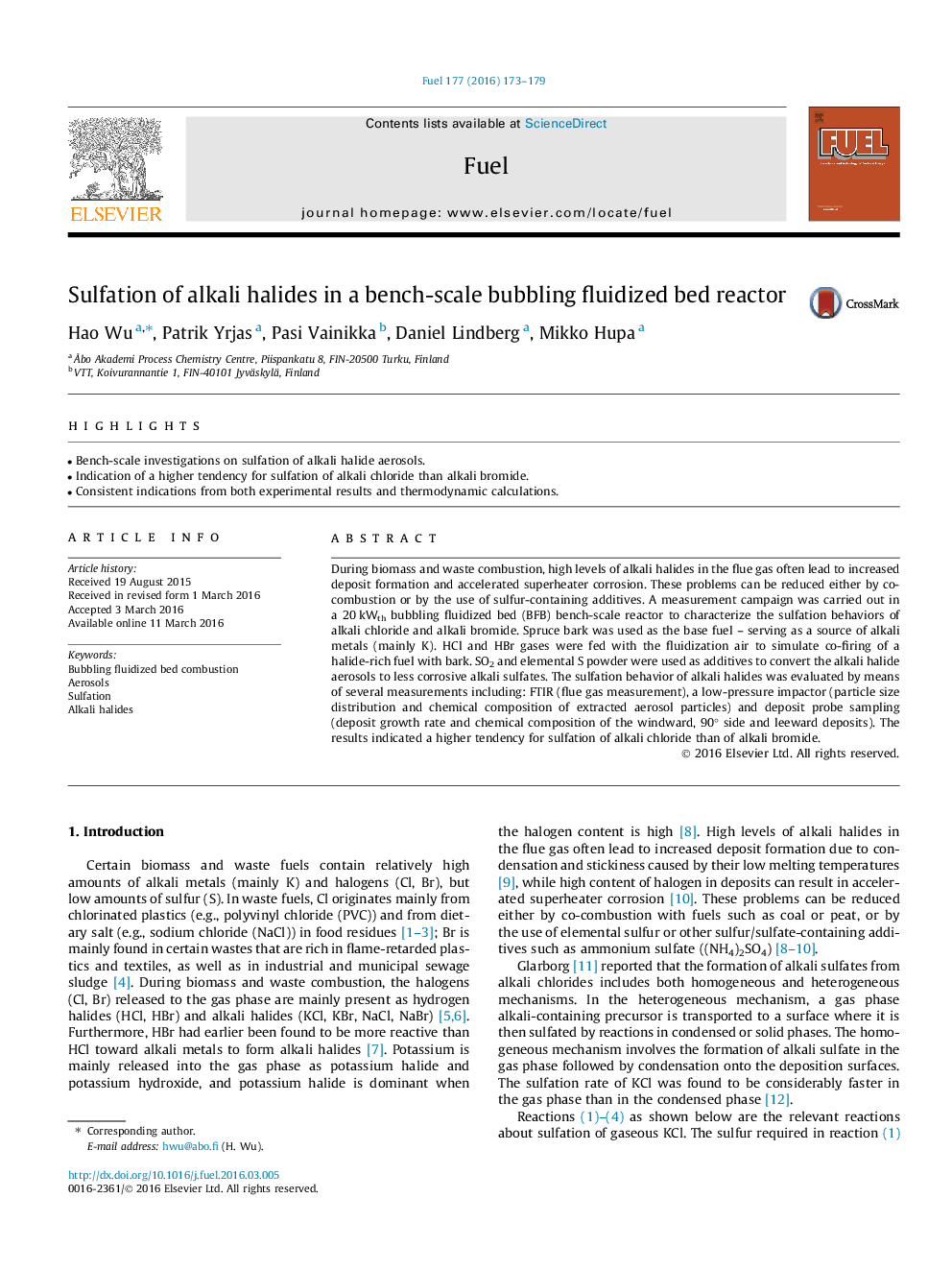| Article ID | Journal | Published Year | Pages | File Type |
|---|---|---|---|---|
| 205129 | Fuel | 2016 | 7 Pages |
•Bench-scale investigations on sulfation of alkali halide aerosols.•Indication of a higher tendency for sulfation of alkali chloride than alkali bromide.•Consistent indications from both experimental results and thermodynamic calculations.
During biomass and waste combustion, high levels of alkali halides in the flue gas often lead to increased deposit formation and accelerated superheater corrosion. These problems can be reduced either by co-combustion or by the use of sulfur-containing additives. A measurement campaign was carried out in a 20 kWth bubbling fluidized bed (BFB) bench-scale reactor to characterize the sulfation behaviors of alkali chloride and alkali bromide. Spruce bark was used as the base fuel – serving as a source of alkali metals (mainly K). HCl and HBr gases were fed with the fluidization air to simulate co-firing of a halide-rich fuel with bark. SO2 and elemental S powder were used as additives to convert the alkali halide aerosols to less corrosive alkali sulfates. The sulfation behavior of alkali halides was evaluated by means of several measurements including: FTIR (flue gas measurement), a low-pressure impactor (particle size distribution and chemical composition of extracted aerosol particles) and deposit probe sampling (deposit growth rate and chemical composition of the windward, 90° side and leeward deposits). The results indicated a higher tendency for sulfation of alkali chloride than of alkali bromide.
